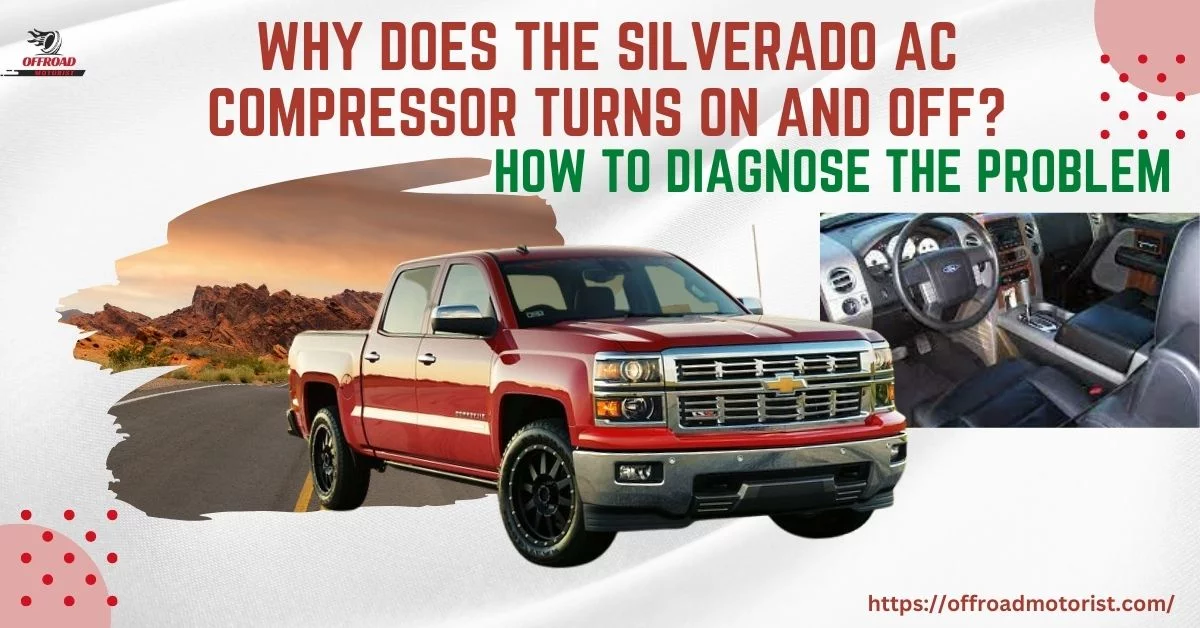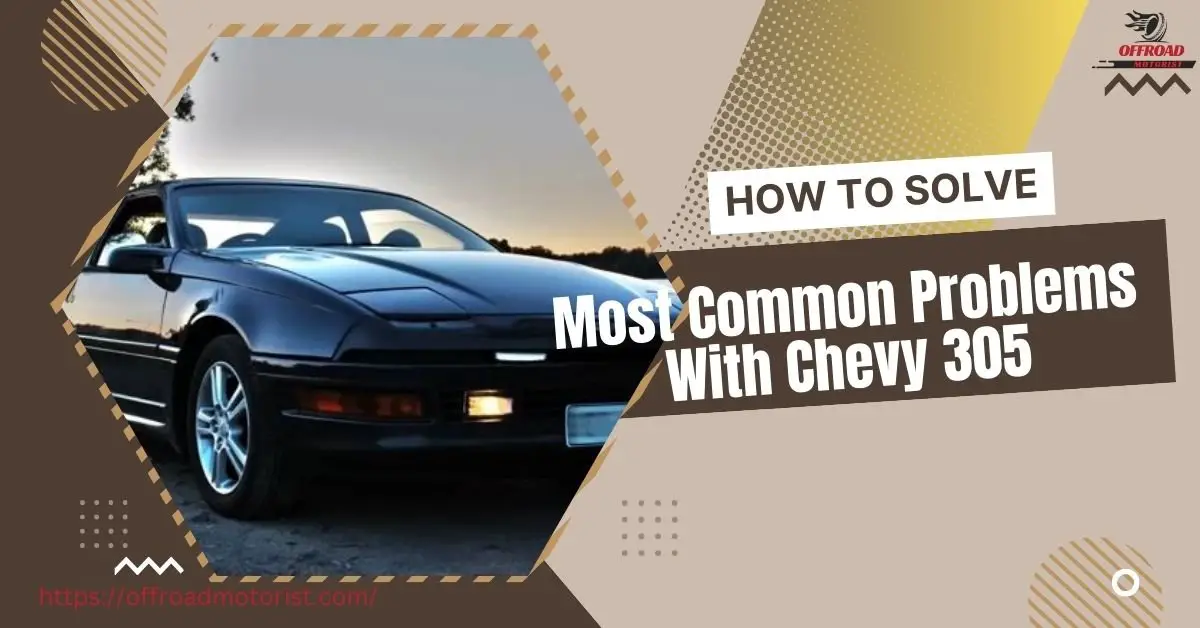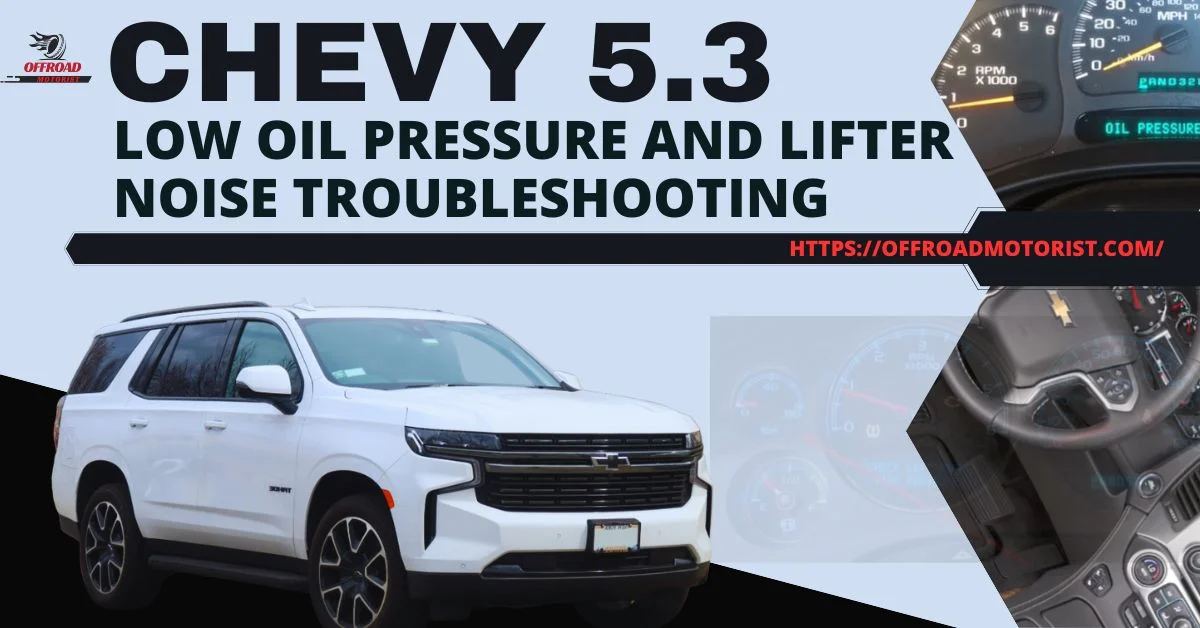The Ultimate Guide to Solving Chevy 6.0 Oil Pressure Problems
Chevy 6.0 engines are known for their power and performance, but like any engine, they can encounter problems. One of the most common issues is Chevy 6.0 oil pressure problems.
As a Chevy 6.0 owner, it’s important to understand the basics of oil pressure, what causes oil pressure issues, and how to diagnose and solve these problems. That’s why we’ve created “The Ultimate Guide to Solving Chevy 6.0 Oil Pressure Problems.”
This post will provide a comprehensive overview of oil pressure, its function in engines, and the common causes of oil pressure issues in Chevy 6.0 engines.
Chevy 6.0 Oil Pressure Problems can lead to a decrease in engine performance and even engine damage if left unaddressed. So, let’s dive into the Chevy 6.0 oil pressure world and start solving those problems today!
Understanding Oil Pressure and its Function in Engines
Oil pressure plays a critical role in the functioning of any internal combustion engine, including Chevy 6.0 engines. To properly diagnose and solve oil pressure problems, it’s essential to understand what oil pressure is and how it works.
What is Oil pressure in a Chevy 6.0 engine
Oil pressure in a Chevy 6.0 engine refers to the pressure created by oil flow within the engine. The oil pump, located within the oil pan, generates this pressure distributed throughout the engine via oil passages.
The oil provides vital lubrication to the engine’s moving parts, helping to reduce friction, heat, and wear.
Functions of Oil Pressure in Engines
Understanding oil pressure and its function in engines is crucial for the proper maintenance and performance of your Chevy 6.0 engine. Here are some functions of Oil Pressure.
Maintaining proper lubrication & Monitoring Oil Pressure
One of the main functions of oil pressure is to maintain proper lubrication of the engine’s moving parts. The oil helps reduce friction between parts, which can generate heat and cause damage.
By monitoring oil pressure, the engine’s computer can provide early warning signs of problems, allowing the driver to take action before more serious damage occurs.
Ensuring the oil flow
Oil pressure ensures that the oil flows evenly and continuously to all the parts of the engine that require lubrication, such as bearings, pistons, and camshafts.
By ensuring that the oil is flowing evenly and continuously, properly lubricating all the engine’s moving parts, and removing heat efficiently.
Keeping the engine cool
Another important function of oil pressure is to provide cooling to the engine. The oil acts as a coolant, removing heat from the engine and helping to regulate its temperature.
High oil pressure can indicate that the oil is flowing efficiently, which helps to keep the engine cool.
Monitoring the overall health of the engine
Finally, oil pressure also monitors the engine’s overall health. A drop in oil pressure can indicate a problem with the engine’s oil system, such as low oil levels, clogged oil passages, worn bearings or pumps, or a faulty oil pressure sensor.
Importance of Maintaining Proper Oil Pressure in Chevy 6.0
Maintaining proper oil pressure in a Chevy 6.0 engine is crucial for several reasons:
- Lubrication: Oil lubricates the engine’s internal components, reducing friction and wear.
- Engine protection: Adequate oil pressure helps prevent damage to internal engine components, such as bearings, camshafts, and lifters.
- Engine cooling: Oil helps cool the engine by absorbing heat from internal components and carrying it to the oil pan.
- Engine performance: Proper oil pressure helps ensure optimal engine performance by providing proper lubrication to internal components and reducing friction.
If the oil pressure is too low, it can cause engine damage or failure. If the oil pressure is too high, it can cause excessive wear on the oil pump and oil-pressure relief valve.
Therefore, it is important to regularly monitor oil pressure and address any issues as soon as they arise.
Common Causes of Oil Pressure Issues in Chevy 6.0 Engines
Oil pressure issues in Chevy 6.0 engines can be caused by a variety of factors. Some of the most common causes include:
01. Low Oil Levels:
One of the most common causes of oil pressure problems is simply having low oil levels. If there is not enough oil in the engine, the oil pump cannot generate enough pressure to lubricate all the engine’s moving parts properly.
This can lead to increased friction, heat, and wear and can even cause engine damage.
02. Clogged Oil Passages:
Over time, oil passages can become clogged with debris or sludge, which can restrict the flow of oil. This can result in lower oil pressure, as the oil pump has to work harder to maintain proper lubrication.
03. Worn Bearings and Oil Pumps:
Worn bearings and oil pumps can reduce the efficiency of the oil pump, leading to lower oil pressure. Bearings and pumps can wear out over time due to normal wear and tear or poor maintenance practices.
04. Faulty Oil Pressure Sensors:
The oil pressure sensor is responsible for measuring the pressure within the engine and sending a signal to the engine’s computer.
If the sensor is faulty, it can give an incorrect reading, leading to an incorrect diagnosis of the oil pressure problem.
05. Dirty or Worn Oil Filter:
The oil filter removes contaminants from the oil before circulating throughout the engine. If the filter becomes clogged or worn, it can restrict oil flow, lowering oil pressure.
Note: These are some of the common causes of oil pressure issues in Chevy 6.0 engines. Understanding these causes is the first step in diagnosing and solving oil pressure problems, and it can help you keep your engine running smoothly for years to come.
Diagnosing Oil Pressure Issues in Chevy 6.0 Engines
Diagnosing oil pressure issues in Chevy 6.0 engines requires a systematic approach and a basic understanding of the oil pressure system. Here are the steps you can follow to diagnose oil pressure problems:
Step 01: Check the Oil Level
The first step in diagnosing oil pressure problems is to check the oil level. Low oil levels can cause a drop in oil pressure, so it’s important to ensure the oil level is at the proper level.
You can check the oil level using the dipstick, which is located under your vehicle’s hood.
Step 02: Check the Oil Pressure Gauge
The oil pressure gauge, located on the dashboard of your vehicle, provides a visual representation of the oil pressure within the engine. If the gauge indicates low oil pressure, it’s a sign that there may be a problem with the oil system.
Step 03: Check the Engine’s Warning Lights
The engine’s warning lights, such as the check engine light or the oil pressure warning light, can provide an early warning of oil pressure problems.
If these lights are illuminated, it’s important to diagnose the problem immediately.
Step 04: Use a Digital Multimeter
A digital multimeter can be used to measure the oil pressure within the engine. To use a multimeter, you’ll need to remove the oil pressure sensor and connect the multimeter to the sensor’s wiring.
The multimeter will then provide a reading of the oil pressure, which you can compare to the manufacturer’s specifications.
Step 04: Inspect the Oil System
If the oil pressure gauge indicates low oil pressure, it’s important to inspect the oil system for any signs of wear, clogs, or other issues.
This may include checking the oil passages, oil pump, and bearings for signs of wear or damage.
Step 03: Test the Oil Pressure Sensor
If the oil pressure gauge indicates low oil pressure, it’s possible that the problem is with the oil pressure sensor. To test the sensor, you’ll need to use a multimeter to measure the voltage being sent from the sensor to the engine’s computer.
If the voltage is not within the manufacturer’s specifications, it’s likely that the sensor is faulty and needs to be replaced.
Note: By following these steps, you can diagnose oil pressure problems and determine the cause of the problem. With a proper diagnosis, you can then take the necessary steps to solve the problem.
Solutions for Solving Chevy 6.0 Oil Pressure Issues
Once you have diagnosed the cause of the oil pressure issue in your Chevy 6.0 engine, several solutions can be used to solve the problem. Some of the most common solutions include:
01. Adding Oil:
If the oil level is low, the easiest solution is simply to add more oil to the engine. Adding oil can help to increase the oil pressure and prevent engine damage.
Adding engine oil to your Chevy 6.0 engine is a simple task that can be done in a few steps. Here’s how to do it:
- Locate the oil filler cap: The oil filler cap is typically located on the top of the engine, near the valve cover.
- Gather supplies: You will need a clean funnel, a fresh bottle of the recommended oil type and viscosity, and a clean rag.
- Clean the area: Clean the area around the oil filler cap with a rag to prevent dirt and debris from entering the engine when you remove the cap.
- Remove the oil filler cap: Use a clean rag to turn the oil filler cap counterclockwise to remove it.
- Add oil through the funnel: Place the funnel into the oil filler hole and slowly add oil through the funnel. Pour the oil slowly and steadily, taking care not to overfill the engine.
- Check the oil level: Use the dipstick to check the oil level and make sure it is between the “full” and “add” marks on the dipstick.
- Replace the oil filler cap: Clean the oil filler cap and the area around it, and then replace the cap by turning it clockwise.
It is important to use the correct type, and viscosity of oil recommended by the manufacturer, as using the wrong type of oil can harm the engine.
02. Cleaning or Replacing the Oil Filter:
If the oil filter is clogged or worn, it can restrict the flow of oil, leading to lower oil pressure. Cleaning or replacing the oil filter can help restore proper oil pressure and improve the engine’s performance.
Here is a step-by-step guide to cleaning or replacing the oil filter in a Chevy 6.0 engine:
- Locate the oil filter: The oil filter is usually located near the bottom of the engine, either on the side or below it.
- Gather the necessary tools: You will need a wrench to remove oil filters, an oil drain pan, and a new oil filter.
- Drain the oil: Place the oil drain pan underneath the oil filter to catch any oil that may drain out. Then, loosen the oil filter with the oil filter wrench, but do not remove it yet. Allow the oil to drain into the drain pan until it stops.
- Remove the oil filter: Using the oil filter wrench, unscrew the oil filter from the engine and let any remaining oil drain into the drain pan.
- Clean the oil filter mount: Clean the mount where the oil filter was located with a clean cloth to remove any debris or residue.
- Install the new oil filter: Apply a thin coat of clean engine oil to the new oil filter’s gasket. Then, screw the new oil filter onto the mount by hand until it is snug, then tighten it further with the oil filter wrench. Ensure the filter is tightened properly, but be careful not to over-tighten it, as this can cause damage to the filter or the mount.
- Fill the engine with oil: Once the new oil filter is installed, fill the engine with the recommended oil type to the proper level, as indicated by the engine oil dipstick.
- Start the engine and check for leaks: Start the engine and let it run for a few minutes. Then, check for any leaks from the oil filter or drain pan. If there are no leaks, the oil filter replacement is complete.
03. Replacing the Oil Pump:
Replacing the oil pump in a Chevy 6.0 engine may be necessary if it becomes worn or damaged, reducing its efficiency and leading to lower oil pressure.
Replacing the oil pump can help restore proper oil pressure and prevent engine damage. Here is a step-by-step guide for replacing the oil pump in a Chevy 6.0 engine:
- Gather the necessary tools: You will need a set of socket wrenches, a drain pan, a pump gasket set, and a new oil pump.
- Drain the oil: Place the drain pan underneath the engine to catch any oil that may drain out. Then, drain the oil from the engine by removing the oil drain plug.
- Remove the oil pump drive: Depending on the year and model of your Chevy 6.0 engine, you may need to remove the oil pump drive. This will vary but typically involves removing the drive belt or chain and the cover that protects the oil pump drive.
- Remove the oil pump: Locate the oil pump, which is typically at the front of the engine. Remove the bolts that secure the pump to the engine block, then carefully remove the pump.
- Clean the pump mounting surface: Clean the surface where the pump was located with a clean cloth to remove any debris or residue.
- Install the new oil pump: Apply a thin coat of clean engine oil to the gasket of the new oil pump. Then, install the new oil pump by securing it to the engine block with the bolts.
- Install the pump drive: If you removed the pump drive, reinstall it according to the manufacturer’s instructions.
- Fill the engine with oil: Fill the engine with the recommended oil type to the proper level, as indicated by the engine oil dipstick.
- Start the engine and check for leaks: Let it run for a few minutes. Then, check for any leaks from the oil pump or drain pan. If there are no leaks, the oil pump replacement is complete.
04. Replacing the Bearings:
If the bearings are worn or damaged, they can reduce the efficiency of the oil pump, leading to lower oil pressure. Replacing the bearings can help restore proper oil pressure and improve the engine’s performance.
Here is a step-by-step guide for replacing the bearings in a Chevy 6.0 engine:
- Gather the necessary tools: You will need a set of socket wrenches, a drain pan, a bearing removal tool, and a new set of bearings.
- Drain the oil: Place the drain pan underneath the engine to catch any oil that may drain out. Then, drain the oil from the engine by removing the oil drain plug.
- Remove the oil pump: Locate the oil pump, typically at the front of the engine. Remove the bolts that secure the pump to the engine block, then carefully remove the pump.
- Remove the old bearings: Using a bearing removal tool, remove the old bearings from the oil pump. Take care not to damage the shaft or housing during the removal process.
- Clean the housing and shaft: Clean the housing and shaft thoroughly to remove debris or residue.
- Install the new bearings: Apply a thin coat of clean engine oil to the new bearings and install them into the oil pump. Make sure the bearings are seated properly and are not damaged during installation.
- Reinstall the oil pump: Reinstall the oil pump by securing it to the engine block with the bolts.
- Fill the engine with oil: Fill the engine with the recommended oil type to the proper level, as indicated by the engine oil dipstick.
- Start the engine and check for leaks: Let it run for a few minutes. Then, check for any leaks from the oil pump or drain pan. If there are no leaks, the bearing replacement is complete.
05. Replacing the Oil Pressure Sensor:
Replacing the oil pressure sensor in a Chevy 6.0 engine may be necessary if it becomes faulty and gives an incorrect reading, leading to an incorrect diagnosis of the oil pressure problem.
Replacing the oil pressure sensor can help restore proper oil pressure and improve the engine’s performance. Here is a step-by-step guide for replacing the oil pressure sensor in a Chevy 6.0 engine:
- Gather the necessary tools: You will need a socket set, a ratchet, a new oil pressure sensor, and a replacement O-ring.
- Locate the oil pressure sensor: The oil pressure sensor is typically located on the engine block near the oil filter.
- Disconnect the electrical connection: Locate the electrical connection for the oil pressure sensor and disconnect it by pulling the clip off of the connection.
- Remove the oil pressure sensor: Use a socket and ratchet to remove the bolts that secure the oil pressure sensor to the engine block. Carefully remove the sensor and the O-ring.
- Install the new oil pressure sensor: Apply a small amount of engine oil to the new O-ring and install it onto the engine block. Then, install the new oil pressure sensor and tighten the bolts to the manufacturer’s specifications.
- Reconnect the electrical connection: Reconnect the electrical connection to the new oil pressure sensor by pressing the clip back into place.
- Start the engine: Let it run for a few minutes to ensure the new oil pressure sensor is working properly. Check the oil pressure gauge to ensure it’s reading correctly.
06. Regular Maintenance:
Regular maintenance, including regular oil changes, can help to prevent oil pressure problems and keep your engine running smoothly. Here are some recommended steps for regular maintenance of your Chevy 6.0 engine:
- Change the oil and oil filter: Regular oil changes are necessary to remove contaminants and provide proper lubrication for the engine. Follow the manufacturer’s recommended schedule for oil changes, typically every 3,000 to 7,500 miles.
- Inspect and replace the air filter: A dirty air filter can restrict airflow and reduce engine performance. Inspect the air filter regularly and replace it as necessary.
- Inspect and replace the fuel filter: A dirty fuel filter can reduce engine performance and cause problems with the fuel system. Inspect the fuel filter regularly and replace it as necessary.
- Check and replace spark plugs: Worn or dirty spark plugs can cause misfires and reduce engine performance. Inspect the spark plugs regularly and replace them as necessary.
- Check and replace belts and hoses: Over time, belts and hoses can become worn or brittle, leading to engine problems. Inspect them regularly and replace them as necessary.
- Check the battery and charging system: Regularly check the battery and charging system to ensure proper operation and avoid battery-related problems.
By following the manufacturer’s recommended maintenance schedule, you can help extend your engine’s life and prevent costly repairs.
Important Note on Replacing Any Parts
It is very important to follow the manufacturer’s recommended maintenance schedule to replace any parts (Oil Filter, Oil Pump, Bearings & Oil Pressure Sensor) if necessary to ensure the proper operation of your Chevy 6.0 engine and to prevent costly repairs.
Additionally, replacing any parts may be a complex task that experienced mechanics should only attempt. If you’re unsure of your ability to replace the oil pump, it’s best to seek the assistance of a professional.
FAQs on Chevy 6.0 Oil Pressure Problems
In this session, we’ll provide additional insights and answer more in-depth questions on Chevy 6.0 oil pressure issues. This will provide a comprehensive understanding of the topic and help car owners diagnose and solve any oil pressure problems they may encounter.
By understanding the answers to these frequently asked questions, you will better understand Chevy 6.0 oil pressure issues and the steps you can take to prevent and resolve them.
What are the signs of oil pressure problems in a Chevy 6.0 engine?
Some of the most common signs of oil pressure problems in a Chevy 6.0 engine include warning lights on the dashboard, engine noise, reduced engine power, and oil leaks.
What is the normal oil pressure range for a Chevy 6.0 engine?
The normal oil pressure range for a Chevy 6.0 engine is between 40-60 PSI (pounds per square inch). Maintaining proper oil pressure in the engine to ensure its longevity and prevent damage to internal components is important.
What is the proper way to diagnose oil pressure issues in a Chevy 6.0 engine?
To properly diagnose oil pressure issues in a Chevy 6.0 engine, you should first check the oil level and then inspect the oil filter, oil pump, and bearings for any signs of wear or damage.
You may also want to consider replacing the oil pressure sensor if it is suspected of providing an incorrect reading.
Can I solve oil pressure problems in a Chevy 6.0 engine?
Yes, with some basic knowledge and tools, you can diagnose and solve oil pressure problems in a Chevy 6.0 engine.
However, it is always best to consult a professional mechanic if you are unsure about the repair process.
What is the cost of repairing oil pressure problems in a Chevy 6.0 engine?
The cost of repairing oil pressure problems in a Chevy 6.0 engine can vary widely, depending on the cause and severity of the problem and the type of repair required.
Simple repairs, such as adding oil or cleaning the oil filter, may cost as little as $50, while more complex repairs, such as replacing the oil pump or bearings, can cost several hundred dollars.
What is the difference between high and low oil pressure?
High oil pressure occurs when the oil pump works too hard, pushing oil into the engine at an excessive rate.
Low oil pressure occurs when the oil pump cannot deliver enough oil to the engine components, leading to insufficient lubrication.
What is the role of the oil pressure sensor in a Chevy 6.0 engine?
The oil pressure sensor in a Chevy 6.0 engine monitors the oil pressure and sends signals to the engine control unit, which then displays the information on the dashboard.
This helps car owners monitor the oil pressure and ensure the engine functions correctly.
Can using a thicker oil increase oil pressure?
No, using thicker oil will not necessarily increase oil pressure. Using thicker oil can sometimes reduce oil pressure by making it harder for the oil pump to circulate the oil.
Is it okay to drive with low oil pressure for a short period of time?
No, driving with low oil pressure is not okay, as this can cause serious damage to the engine and lead to expensive repairs. If you notice any signs of low oil pressure, it is important to stop the vehicle immediately and investigate the problem.
How often should I check the oil pressure in my Chevy 6.0 engine?
It is recommended to check the oil pressure in your Chevy 6.0 engine regularly, at least once a month, or whenever you perform a routine oil change.
How can I prevent oil pressure issues in my Chevy 6.0 engine?
To prevent oil pressure issues in your Chevy 6.0 engine, it is important to maintain the oil level, change the oil filter regularly, and use high-quality motor oil.
It is also a good idea to have the oil pump, bearings, and other critical components inspected regularly to detect any potential problems early on.
Final Thoughts
Oil pressure is an essential component of engine performance, and problems with oil pressure can lead to serious engine damage. By understanding the causes and symptoms of oil pressure issues.
By systematically diagnosing and solving these problems, you can keep your Chevy 6.0 engine running smoothly and avoid costly repairs.
Whether you’re a seasoned mechanic or a car enthusiast, it’s important to stay informed about oil pressure issues and be proactive in maintaining the performance of your engine.
Following the steps outlined in this post, you can diagnose and solve oil pressure problems and keep your Chevy 6.0 engine running at its best for years to come.




![Oil Pressure Low Stop Engine Chevy Silverado [Causes and Solutions] Oil Pressure Low Stop Engine Chevy Silverado](https://offroadmotorist.com/wp-content/uploads/2023/03/oil-pressure-low-stop-engine-chevy-silverado-150x150.jpg)
![Chevy Transfer Case Interchange Chart [Everything you need to Know] chevy transfer case interchange chart](https://offroadmotorist.com/wp-content/uploads/2023/03/chevy-transfer-case-interchange-chart-150x150.jpg)






